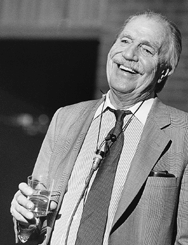The historical roots of ecological planning and sustainability are varied. Metropolis magazine may not acknowledge the role of landscape architects in sustainability, perhaps this is because no one has specifically outlined a definitive history of ecological landscape architecture and planning. I began some time back to trace some of this lineage, which i will include a later date.
On a similar note, I found that the American Planning Association (APA) had previously (2003) released a list of 25 Individuals Who Influenced Planning before 1978, prepared for the 25th anniversary of the APA. A few notable LA’s make this list of 25, along with a bevy of influential urbanists. This is by no means comprehensive, but telling as to the mark that the field has made on planning over the years (most links via Wikipedia):
1. Hippodamus (5th century B.C.)
2. Benjamin Banneker (1731-1806)
3. Pierre L’Enfant (1754-1852)
4. Baron Haussmann (1809-1891)
5. Frederick Law Olmsted (1822-1903)
 :: image via fredericklawolmsted.com
:: image via fredericklawolmsted.com
“Frederick Law Olmsted is widely recognized as the founder of American landscape architecture and the nation’s foremost parkmaker. His first, most loved, and in many ways his best known work was his design of Central Park in New York City (1858-1876) with his partner Calvert Vaux. But Olmsted would go on to have a significant influence in the way cities and communities are built to incorporate the idea of nature and parks. He was one of the first to espouse the principles of the City Beautiful movement in America and to introduce the idea of suburban development to the American landscape.”
6. George Pullman (1831-1897)
7. Camillo Sitte (1843-1903)
8. Daniel Burnham (1846-1912)
9. Jacob August Riis (1849-1914)
10. Ebenezer Howard (1850-1928)
11. Patrick Geddes (1854-1932)
12. Frederick Law Olmsted, Jr. (1870-1957) :: image via Cornell University
:: image via Cornell University
“Arguably the intellectual leader of the American city planning movement in the early twentieth century, Frederick Law Olmsted, Jr. was a worthy son of a distinguished father. While still an adolescent, “Rick” Olmsted worked and studied under his father before entering Harvard. After graduation in 1894, he entered his father’s firm and a year later, as the elder Olmsted’s health deteriorated, he and his halfbrother took it over under the name Olmsted Brothers. “
13. Clarence Arthur Perry (1872-1944)
14. Alfred Bettman (1873-1945)
15. Clarence Stein (1882–1975)
16. Le Corbusier (1887-1965)
17. Robert Moses (1888-1981)
18. Lewis Mumford (1895-1988)
19. Catherine Bauer (1905-1964)
20. William Levitt (1907-1994)
21. Jane Jacobs (1916-2006)
22. William Whyte (1917-1999)
23. Kevin Lynch (1918-1984)
24. Ian McHarg (1920-2001)
 :: image via Wikipedia
:: image via Wikipedia
“Ian McHarg was one of the true pioneers of the environmental movement… He published his landmark book, Design With Nature, in 1969. In it, McHarg spelled out the need for urban planners to consider an environmentally conscious approach to land use, and provided a new method for evaluating and implementing doing so. Today, Design With Nature is considered one of the landmark publications in the environmental movement, helping make McHarg arguably the most important landscape architect since Frederick Law Olmsted.
25. Paul Davidoff (1930-1984)
The list is diverse, showing the multiple voices that together shape movements such as planning. From ancient philosophers, to housers, writers, theorists, urban legends, and yes, landscape architects – planning, like many disciplines, is the product of genius and hard work in it’s many forms.